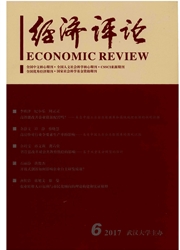

 中文摘要:
中文摘要:
在传统研究财富效应的文献中,分析路径多为当期资产价值变动对下一期消费的影响,或对当期消费的影响。而在消费粘性的视角下,消费对外在冲击的调整不会瞬时完成,消费行为存在跨期依赖,资产价值的变动不只对下一期消费带来直接的财富效应,还会波及到后面多期,即冲击是粘性的,财富效应也是可以多期累积的。而累积财富效应的度量则需要计算出消费粘性及直接财富效应的大小。本文采用2000—2012年全国28个省份城镇居民的季度面板数据,估计得出消费粘性系数为0,6左右,总资产与房产的直接财富效应估计结果虽显著,但数值很小,经过多期累积的财富效应分别为0.0014与0.0013。金融资产的直接财富效应较大,但该估计值不显著。资产价值变动对于消费的影响甚微。
 英文摘要:
英文摘要:
Conventional literature shows that the normal research path of wealth effect is the impact of current period asset shocks on the current or next period consumption. However, with sticky consumption perspective, the adjustment will not finish immediately because the existing of inter-temporal stickiness, so, the asset shocks affect not only the next period consumption, namely the immediate wealth effect, but also more periods afterwards, which means the wealth effect is additive among periods. We call the added as the eventual wealth effect, which is calculated through consumption stickiness coefficient and the immediate wealth effect. By adopting 2000-2012 quarterly panel data of 28 provinces' urban residents, we estimate the consumption stickiness coefficient is around 0.6. The immediate wealth effect of total assets and housing asset is significant but small, and the eventual wealth effect is 0.0014 and 0.0013 respectively. The immediate wealth effect of financial asset is big but not significant. Generally, the asset shocks have limited effects on consumption.
 同期刊论文项目
同期刊论文项目
 同项目期刊论文
同项目期刊论文
 期刊信息
期刊信息
